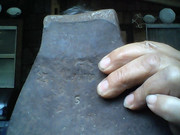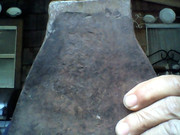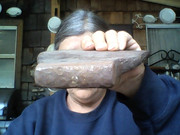- Joined
- Jul 21, 2018
- Messages
- 5
Not sure, but I think this was a large axe that someone maybe broke and turned it into a wedge. Mark looks to be C E & T Co with the number 5 stamped below.
[url=https://postimg.cc/image/kc52hmdwd/] [/URL]
[/URL]
[url=https://postimg.cc/image/gsj4rt3gt/] [/URL]
[/URL]
[url=https://postimg.cc/image/tjxayaxt9/] [/URL]
[/URL]
It's a large one 8" top to bottom and 7" across the blade at the bottom.
[url=https://postimg.cc/image/kc52hmdwd/]
 [/URL]
[/URL][url=https://postimg.cc/image/gsj4rt3gt/]
 [/URL]
[/URL][url=https://postimg.cc/image/tjxayaxt9/]
 [/URL]
[/URL]It's a large one 8" top to bottom and 7" across the blade at the bottom.

